Wonder
Dendrosenecio woodlands on Mt. Kilimanjaro
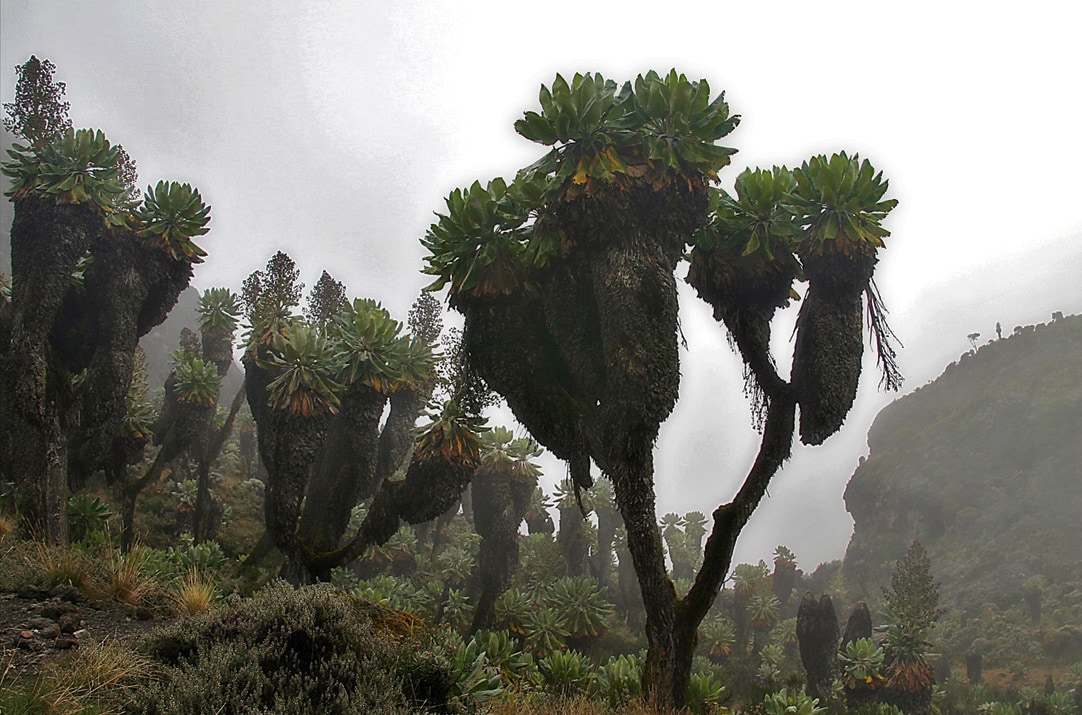
 In short
In short
The amazing Dendrosenecio woodlands near the top of Kilimanjaro mountain belong to the most unusual woodlands in the world. The breathtaking landscape here is adorned with alien looking plants – giant groundsels and lobelias.
 43.8%
43.8%
GPS coordinates
Location, address
Area
Dominating species
UNESCO World Heritage status
Map of the site
If you see this after your page is loaded completely, leafletJS files are missing.
 In detail
In detail
East African volcanoes – islands of temperate ecosystems
The highest free-standing volcano of the world (above the sea) is Mount Kilimanjaro which rises 5,895 m above sea level and 5,100 m above the surroundings. The plains around the mountain are dry and hot, covered with savannah and semi-desert vegetation but on the hillsides of Kilimanjaro grow lush tropical forests. Mountain is that high that it has several distinct altitudinal zones, with diminishing glaciers on the top.
Kilimanjaro massif started to form some 3 million years ago and the last major eruptions took place some 350,000 years ago. This is a long time enough for the development of unique species on this isolated mountain.
In Eastern Africa are located several such biodiversity "islands" – free standing mountains with unique plants and animals – Mount Meru, Mount Kenya, Mount Elgon, and others. Mount Kilimanjaro though is the highest and one of the oldest ones.
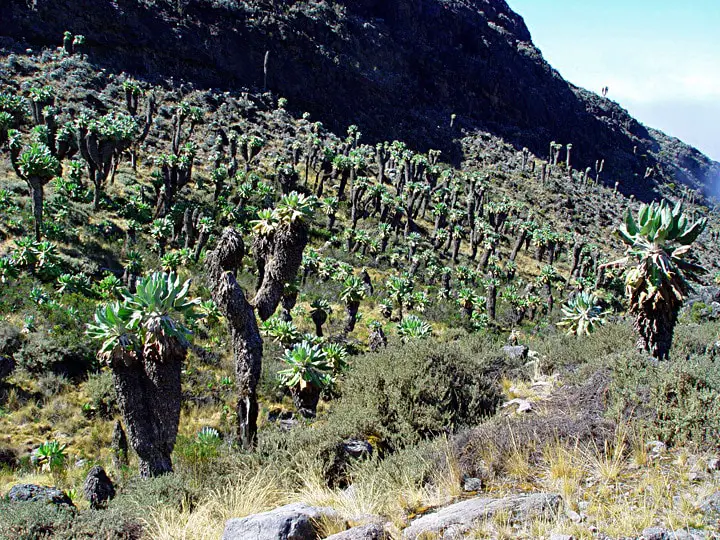
Giant groundsels and lobelias
First Europeans reached the upper part of Kilimanjaro in the second half of the 19th century. When they passed through the dense forest, they were surprised to find groves of weird, alien looking plants.
Most impressive of these plants is Dendrosenecio johnstonii, first described by H.H.Johnston in 1884. This plant grows up to 10 m tall, it forms a woody stem (diameter up to 40 cm) with large leaf rosettes on the top. These stems are branching after the flowering and over the time grow similar to giant candilabres. Mature trees can have up to 80 branches.
These plants grow in wet moorland at the height of 2,7 – 3,35 km and are found only on Mount Kilimanjaro. Further up in the mountain grows another endemic species of giant groundsel – Dendrosenecio kilimanjari (subspecies cotonii), although there is subspecies (kilimanjari) which grows lower, in mist forest. This plant also grows tall, up to 9 m high.
Groundsels have evolved specific adaptation to the frost which occurs almost every night here – the amazing leaf rosettes close inwards during the night, thus protecting the young shoots and flowers.
Third giant plant of Kilimanjaro moorlands is Lobelia deckenii – giant lobelia which grows up to 2.5 m tall when flowering and is found near the summits of other African mountains as well. This plant protects itself from the frost in a very unusual way: leaf rosettes around the stem have small stores of water, which freezes into numerous ice cubicles every night. This layer of ice protects the core of the plant.
Fairly recently (in 2005) there was discovered a frog – Kilimanjaro Stream Frog (Strongylopus kilimanjaro) – which lives at the height of some 3230 m in ice cold streams. Unfortunately the existence of this amphibian is endangered by the melting of glacier.
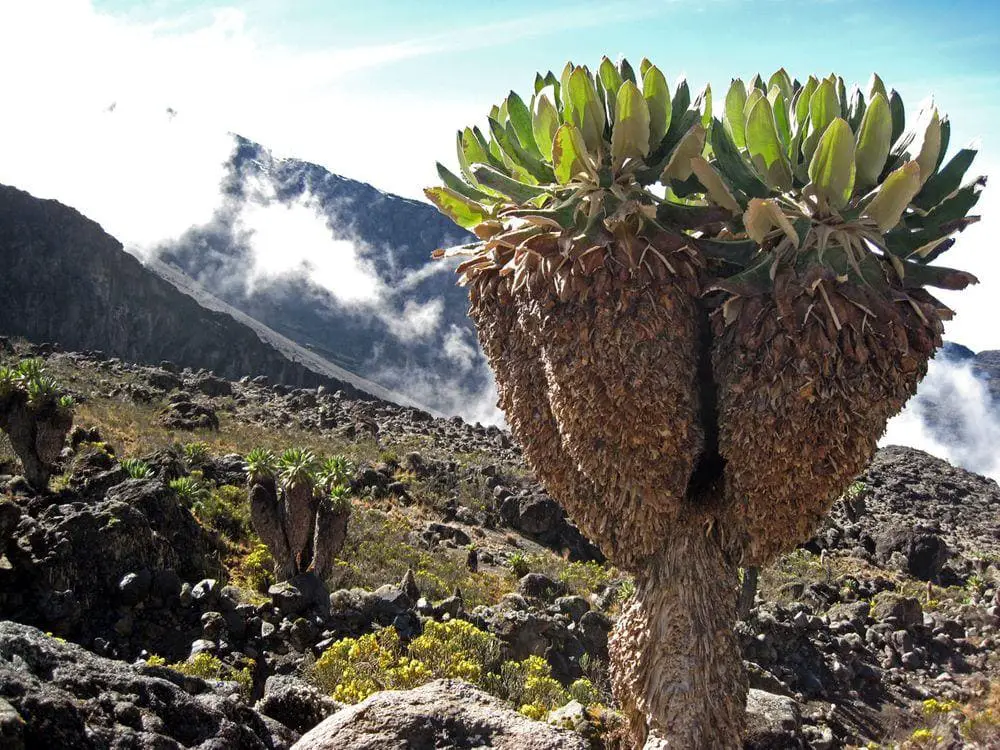
Natural laboratories
The tallest Eastern African mountains (Afromontane sky islands) serve as amazing natural laboratories, where in similar conditions have evolved similar but nevertheless differing species of plants.
Thus 11 species of Dendrosenecio have evolved near the summits of these mountains:
- Dendrosenecio adnivalis – Ruwenzori
- Dendrosenecio battiscombei – Mount Kenya, Aberdare Mountains
- Dendrosenecio brassiciformes – Aberdare Mountains
- Dendrosenecio cheranganiensis – Cherangani Hills
- Dendrosenecio elgonensis – Mount Elgon
- Dendrosenecio erici-rosenii – Virunga Mountains
- Dendrosenecio johnstonii – Mount Kilimanjaro
- Dendrosenecio kilimanjari – Mount Kilimanjaro
- Dendrosenecio keniensis – Mount Kenya
- Dendrosenecio keniodendron – Mount Kenya, Aberdare Mountains
- Dendrosenecio meruensis – Mount Meru, most likely the newest species
These "sky islands" contain also 21 species of giant lobelias.
References
- World Wildlife Fund. The Guinean Montane Forest. Accessed in the 21st April 2013.
 Linked articles
Linked articles
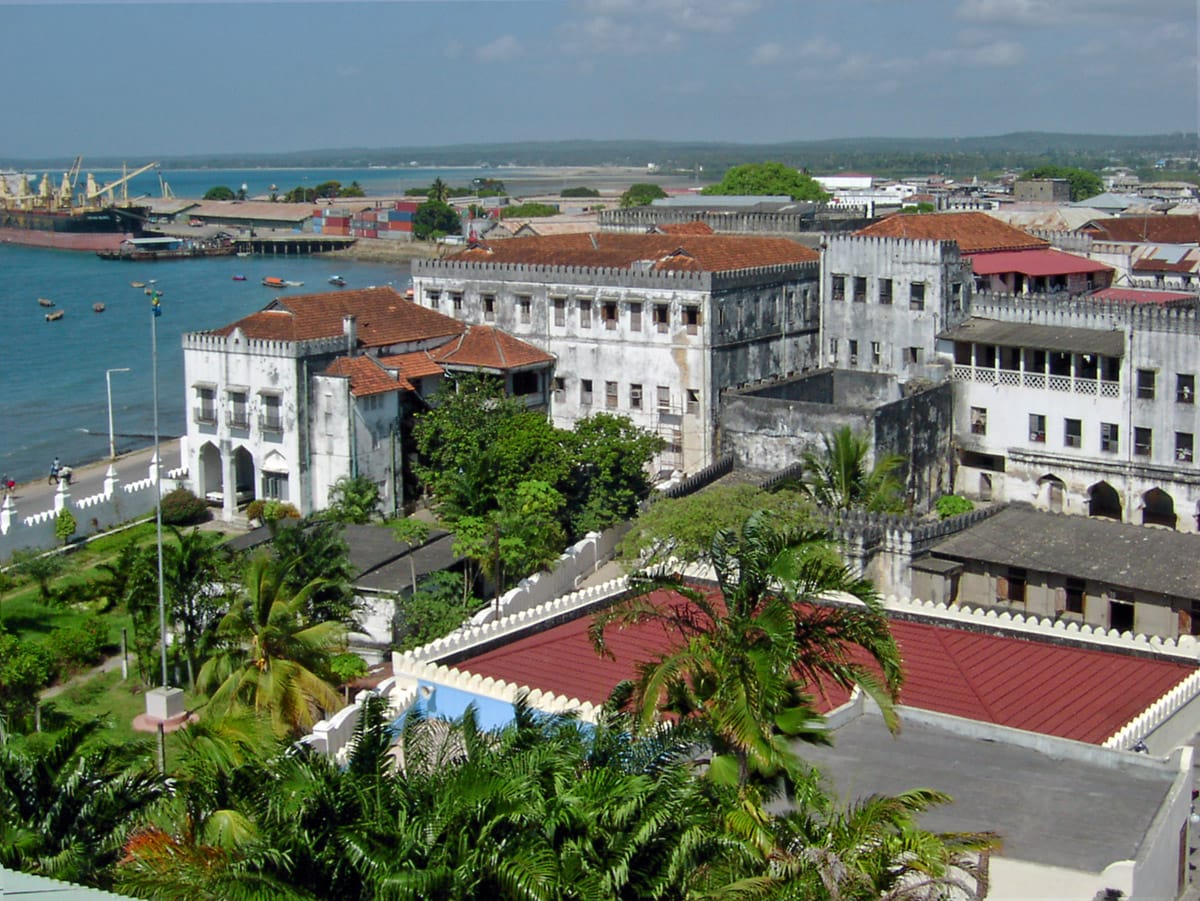
Wonders of Tanzania
This very diverse country has unforgettable scenery and many world-famous landmarks. Highlights of Tanzania are its unique ecosystems, finds of early humans, and historical trading towns in the Indian Ocean.
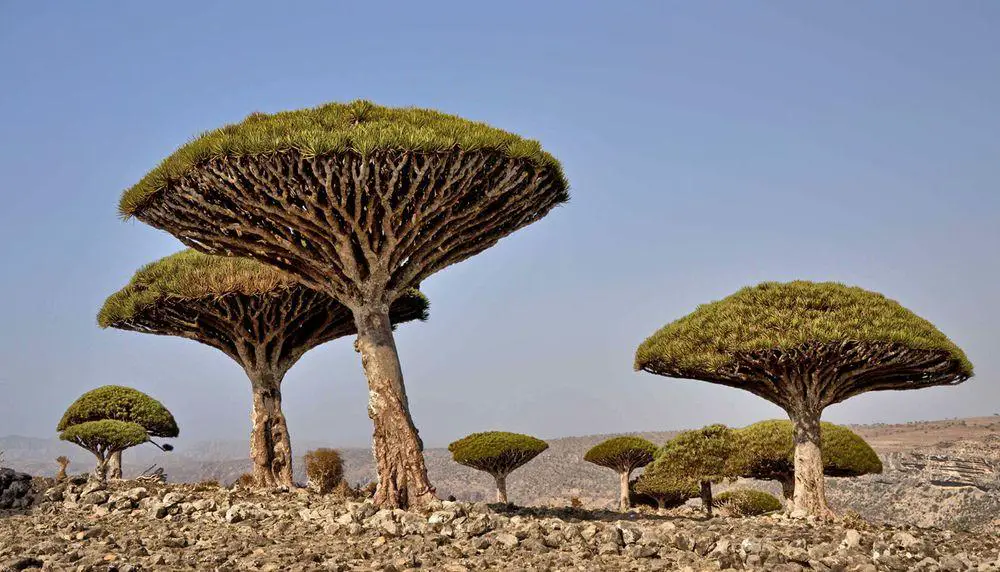
Ecosystems
Biotope is a rather small area with uniform environmental conditions and a specific community of life. Wondermondo describes biotopes and ecosystems which have striking looks, look very beautiful, or have other unusual characteristics.
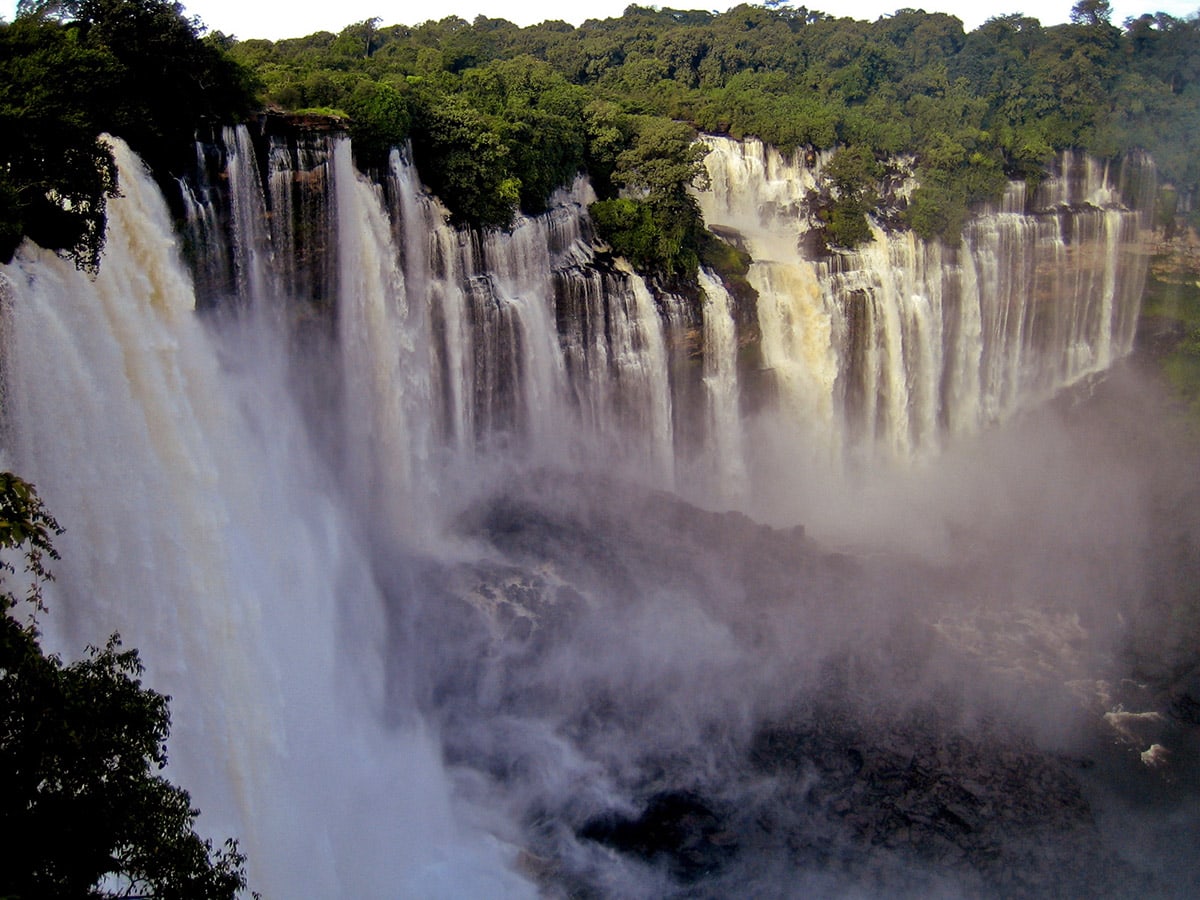
Wonders of Africa
Africa has many outstanding wonders and some of the most surprising ones are the heritage of Egyptian civilization, the vernacular architecture of the Sahel region, tropical ecosystems, and others.
 Recommended books
Recommended books
Kilimanjaro – The Trekking Guide to Africa’s Highest Mountain
At 19,341ft Kilimanjaro is Africa’s highest mountain. Yet with no mountaineering skills necessary to reach the summit, even non-climbers can experience the thrill of climbing one of the world’s greatest peaks. Includes full practical details – getting to Tanzania and Kenya, town guides, and maps to Nairobi.
Kilimanjaro Diaries
When expat blogger and mother of four Eva Melusine Thieme first harbors the idea of ringing out her three years in Africa on the summit of Mount Kilimanjaro, it sounds easy. In fact, it has all the trappings of a dream vacation: no cooking, no fighting kids, and an army of porters to lug everything up the mountain. What can go wrong?


